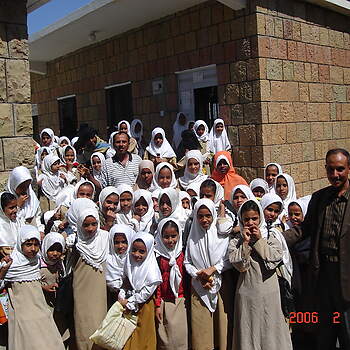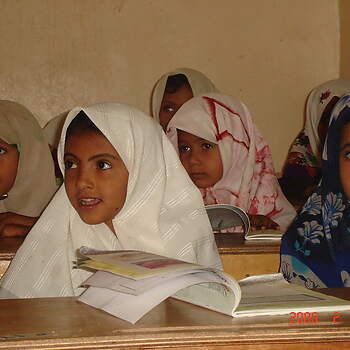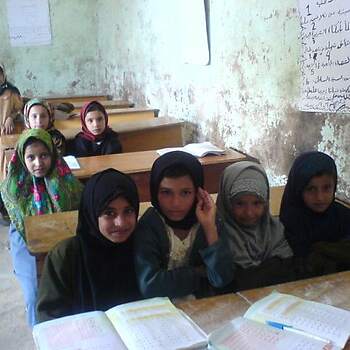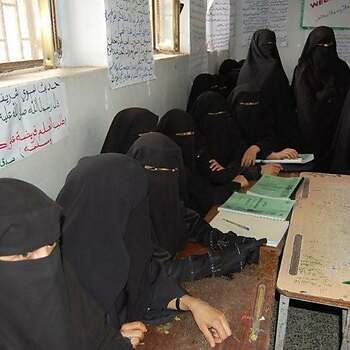6 major reasons to support girls/women’s education are:
1. ENVIRONMENT: countries with higher levels of education are better equipped to deal with environmental challenges. Female education might be a cost-effective way of abating carbon emissions because of its impact on family planning and livelihood (cooking, water use) practices.
2. HEALTH: there is a strong association between mothers’ education and child mortality, and “even a few years of primary schooling … is advantageous for child survival”. On average, one-year extra education for the mother results in a 7–9 % reduction in mortality in children younger than 5 years. It is important to note that “programs aimed at providing medical care to reduce maternal and infant mortality may have limited success unless carried out in parallel with improved availability of education for women”. Additionally, the education of a mother may lead to improved health of her children and fewer children per household.
The link between education and health:
- Better capacity to understand and act on information (e.g. immunizations)
- Improved use of health services, including fertility control and family planning
- Economic benefits (higher income)
- Empowerment and independence (greater individual choice)
- Community effects (whereby the community benefits from generally higher levels of education).
Education of young children, especially girls, also has a significant impact on Sexual- and Reproductive Health and Rights (SRHR) through:
- Girls enrolled in schools are typically more likely to use contraceptive methods than those who are out of school. Schoolgirls are better informed and more motivated to use contraception to avoid pregnancy and sexually transmitted diseases.
- Girls enrolled in schools are less likely to have and initiate premarital sex than those who are out of school.
- Girls enrolled in schools are better protected against violence and sexual abuse than those who are out of school.
- Boys and girls enrolled in schools are less likely to be infected by HIV than those who are out of school – even if AIDS prevention is not covered in the curriculum. Girls with secondary education are less likely to be infected with HIV and they are more likely to practice safe sex than girls with only primary education.
- A higher level of education and income dramatically reduces young girls’ need to exchange sex for money. Additionally, comprehensive sexuality education (CSE) enables young people through the provision of knowledge, attitudes, and values to protect their health by making healthy choices about their sexual lives. Boys and girls learn in their puberty to understand their own bodies and sexuality and to address issues of mutual respect and understanding.
3. DEMOCRACY & PEACE: democracies with a higher share of the educated population are more stable than those with a less educated population. Education promotes democracy through informed citizenship of individuals, reflected for example in voter behavior and participation in community activities. This is strengthened by equal access to education of both men and women and by access to higher levels of education.
The Netherlands’ policies have recognized the power of education for fostering democracy and peace since 2007. In countries affected by conflict, education has the potential to both exacerbate and mitigate conflict. Positive results have been found where education contributed to personal protection (especially for girls), provision of alternative education when the state fails, and restoration of normality after the conflict ends. Appropriate and innovative approaches in education for refugee children matter. However, the evidence base for linkages between education, conflict, and peace-building needs to be strengthened.
4. EQUAL DISTRIBUTION WITH A GENDER BALANCE:
The expansion in access to education has led to increased access for previously disadvantaged groups, such as female students, or students that come from poorer households or minorities. However, gains in access to education, including for previously disadvantaged groups, do not seem to have translated directly into a reduction of inequalities. Existing inequalities, in gender, income, or ethnic origins, are also echoed in the education system (e.g. access, division of resources, quality, curriculum, norms). It appears that access to education in itself is insufficient to overcome a variety of important contextual causes of exclusion – including policies, access to resources, social and cultural barriers – that sustain existing inequalities. Retention is as important as access! Education does seem to support intergenerational mobility, i.e. how children improve their socio-economic position compared to their parents.
5. PERSONAL DEVELOPMENT: Empowerment of Women (and men):
The “micro-level” returns in the case of education are: increased opportunities and chances for employment and higher income potential. Earnings are not only related to the quantity of education (years spent in school) but even more so to the quality of education. There is still a “gender gap” in earnings between men and women, however. And this also goes for opportunities to obtain “top” jobs. In this context, the expression the need to break “the glass ceiling for women” is sometimes used. Fortunately, there are also examples of women who have been able to break this ceiling in their own right. In doing so, they became role models for other women and girls.
6. (MACRO-) ECONOMIC GROWTH:
Evidence suggests that quality education reinforces economic growth. But gender inequality continues to be detrimental to growth. Recent studies conclude that gender gaps in education and employment actually reduce economic growth. Reducing the gender gap in education is also from the macro-economic perspective imperative. Lawrence Summers, the former senior economist of the World Bank and Minister of Finance under US President Bill Clinton, already signaled this in his famous publication “Investing in all the People” (1992), in which he argued that “…investment in girls education is the best economic investment”.



